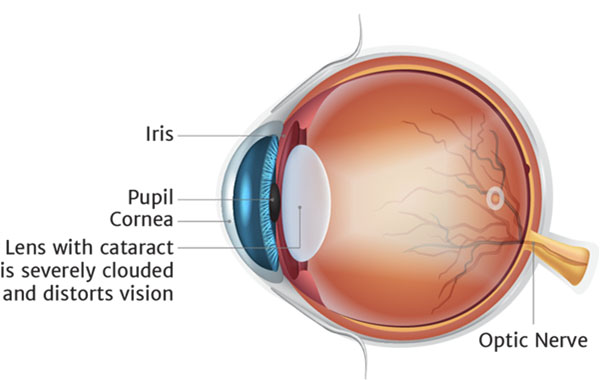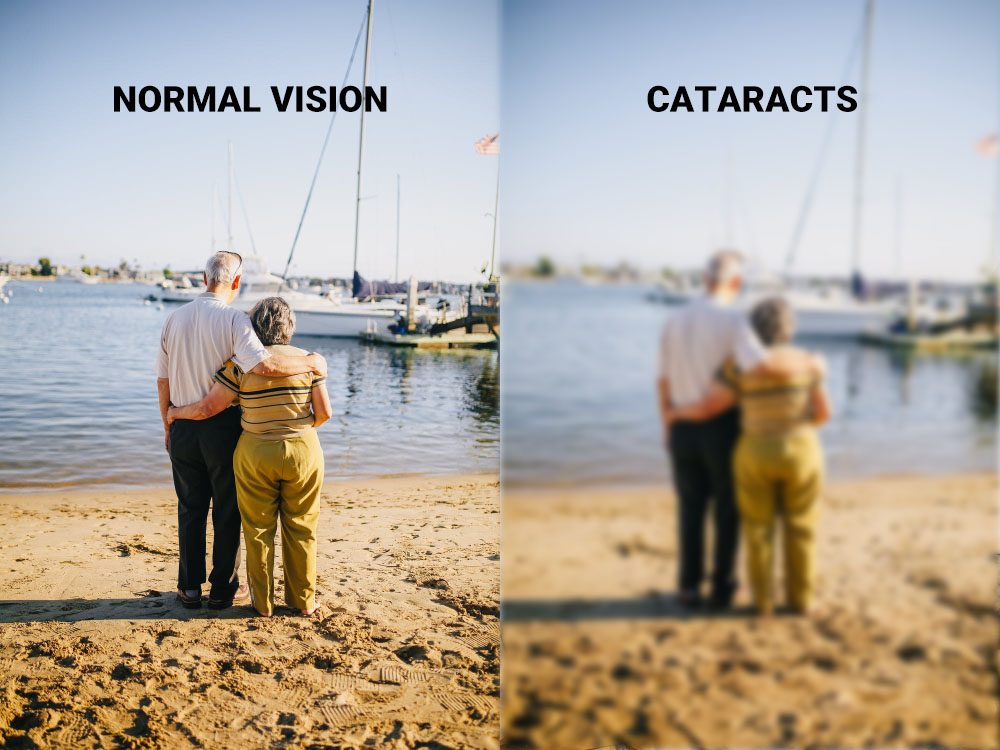Cataract: What you need to know
What is Cataract?

Clear crystalline lens in normal eye
Cataract is one of the most common causes of blur vision in the elderly. The crystalline lens in the eye becomes cloudy and affects vision.
TYPE OF CATARACT
- Age-related
- Congenital (occurring at birth)
- Traumatic cataract
- Diabetic cataract
- Steroid-induced cataract
- Other secondary cataracts
CATARACT
HOW IT OCCURS
When we are young, the crystalline lens in the eye is clear. As we grow older, the lens continues to grow and becomes thicker. Over time, coupled with the effects of ultraviolet (UV) radiation, the crystalline lens becomes hardened and cloudy.

Eye with cataract
Risk Factors
| Primary Cataract | Secondary Cataract |
|---|---|
|
|
SYMPTOMS
- Gradual onset of blur vision
- Difficulty reading at near
- Glare
- Poor night vision
- Poor contrast sensitivity

Blurred Vision with Cataract
IMPORTANCE OF UV PROTECTION
When going outdoors, it is important to have proper UV protection by wearing sunglasses, putting on a wide brim hat, or carrying an umbrella.
This good habit should be adopted by everyone, especially young children, as they are more susceptible to UV exposure.
Is there any treatment?
When the cataract is affecting your lifestyle or quality of life and/or vision is poor, treatment in the form of surgery is indicated.
The surgery involves replacing the cloudy natural lens with a clear artificial lens (intraocular lens). You may still need a pair of spectacles after surgery. It takes about one or two months before new glasses can be prescribed.
However, it is important to note that if you experience blurred vision, do not simply dismiss it as cataracts. There are many reasons why vision may blur, from a simple prescription change to more serious conditions such as diabetic retinopathy, age-related macular degeneration and many others. Please see your optometrist for a comprehensive eye examination.
Your optometrist is trained to detect and monitor cataracts among other eye conditions. He/she will refer you to an ophthalmologist when it is time for your cataracts to be removed.
Photo Credits
Cover and panda photos: Jerome Lee
AMD photo: Walter Pok